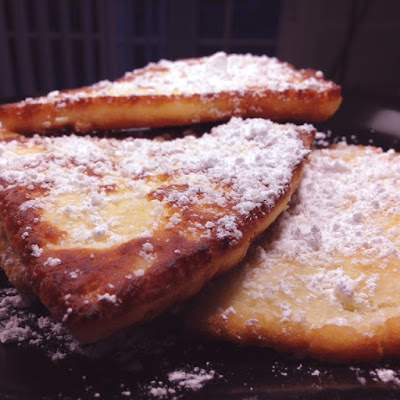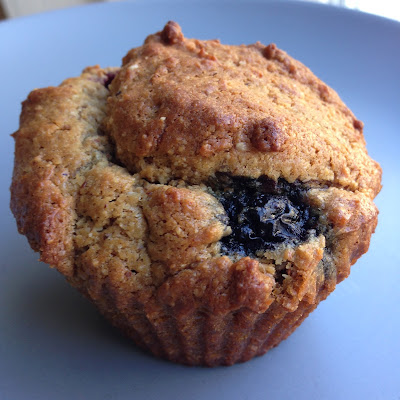I like the idea of this bread with the honey and spices but I feel like mine ended up too floury and dense. It's a lack of practice on my part with kneading by hand. The banana jam smelled up the entire house!
Honey Bread from the Rwandan Women's Bakery (via Jamie Oliver)
Ingredients
- 1 packet of active dry yeast
- 1 egg
- 4-5 cups of all-purpose flour
- 3/4 cup lukewarm milk
- 1/2 cup honey
- 3/4 cup lukewarm water
- 6 tablespoons of melted butter
- 1 tablespoon ground coriander
- 1/2 tsp ground cinnamon
- 1/4 tsp ground cloves
Preparing the dough
Put the lukewarm water in a bowl and sprinkle the yeast packet on top. Leave for 2-3 minutes, then stir thoroughly. Leave the mixture to stand somewhere warm for around 5-10 minutes until you can see bubbles forming and the mixture looks like it’s expanding a little.
While you’re waiting, mix together the honey, egg and spices in a bowl until combined. Add the lukewarm milk, yeast mixture and two-thirds of the butter. Mix well then begin to add the flour, keeping your touch light.
Kneading the dough
Once the dough has come together, remove from the bowl and, on a well-floured surface, combine it with most of the flour – you’re looking for a light, soft dough that isn’t too wet, but you may not need all of your flour, so go slowly. If you get lots of dough on your hands, add a little flour to your palms and rub them together briskly until the dough falls off.
Knead the dough using floured hands (and once it needs no more flour, buttered hands) for around ten minutes, until it is springy and smooth – this stage is really important, because by doing this you’ll wake up the gluten strands, which is what will your bread an ace texture. You want to end up with one or more shiny, round, loaf shapes. I
Baking
What’s great about this bread is that it can be baked in lots of different types of tins. I (Jamie) used 3×5 inch round tins to get three fat little loaves. If you want one large loaf, go for an 8inch round tin, or a large loaf tin (Jenny did this). Alternatively, you can use a large round oven dish, such as a Le Creuset. Butter the tin / dish with the remaining butter and pop your dough inside – fill each one around half full.
Cover the tin with a clean tea towel and allow to rise in a nice warm place for at least an hour – you want the dough to have risen almost to the top of the tin. Don’t scrimp on this stage, as even rising is important!
Bake at 190°C/375°F/gas 5 for around 40 minutes – it should have a golden brown top with a crust. To test if it’s done, take a tea towel and place it on top, then turn it upside down so the tea towel catches it. Then tap it on the bottom – if it sounds hollow like a drum then it’s done!
Serve in torn-off chunks or thick slices with butter and a bit more honey, OR banana jam!
Banana Jam (via Josie Stow)
These directions are not the full recipe, as she included steps for canning at the end. I knew I wasn't going to can it, so I just transcribed a simplified version. I made a half recipe and it worked fine.
- 1 ¾ cups sugar
- ½ cup fresh lemon juice
- 1 tbsp lemon zest
- 6 ripe bananas
Peel and slice the bananas, add them to the lemon mixture and gently stir until they are well coated.
Cover the bowl with plastic wrap and leave to marinate 1 hour
Scrape into a pan and place over low heat. Bring mixture to a boil, stirring occasionally to prevent sticking.
Boil until thermometer reaches jam stage, 220 F, it will be a lovely rich amber color. (If you aren't canning it, you can probably get away with simply cooking it 30 minutes or so, until thickened.)




